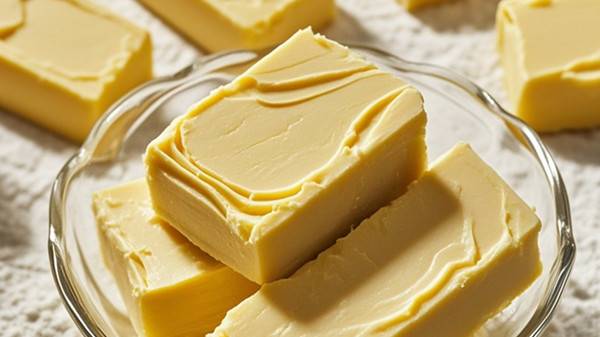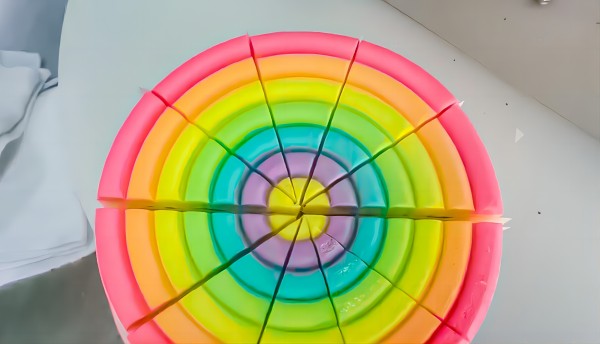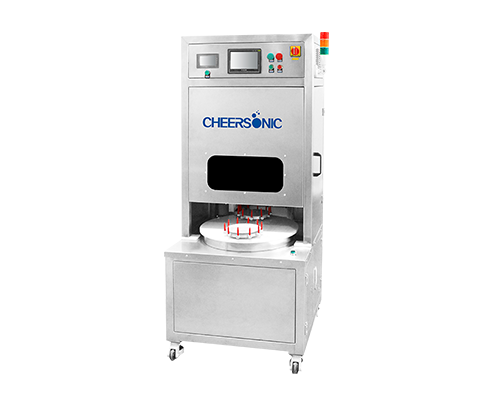Baking tips for beginners, 18 basic points you must know
Stepping into the sweet world of baking is like starting a wonderful journey of taste and creativity. For every baking novice, mastering the key to basic knowledge is the starting point to unlock unlimited deliciousness and creativity.
Common baking questions
Question 1
Q: What is the formula for the percentage of ingredients in bread making?
A: Total weight of ingredients/total weight of flour*100%=ingredient%
Question 2
Q: What is the role of oil in baking?
A: It can shorten the length of gluten, and the coated cake lubricates the gluten so that the gluten does not stick together.
Question 3
Q: How many steps are there in the baking process?
A: Whether it is bread, cake or biscuits, the baking process follows this process ① Gas formation and expansion (yeast, soda releases carbon dioxide and water vapor) ② Gas condensation in bubbles (bubbles in gluten, gas in protein paste) ③ Starch gelatinization (starch absorbs water and heats to about 60 degrees to start gelatinization to give the product a shape) ④ Protein coagulation (protein begins to coagulate at 74 degrees) ⑤ Partial water evaporation (so baked bread will be very light, and undercooked ash is heavier) ⑥ Fat melting (different fats will melt at different temperatures and release gas) ⑦ Crust formation and coloring (the moisture on the surface of the product evaporates and dries to form a crust, milk, sucrose and eggs will increase the coloring.)
Question 4
Q: Why shouldn’t bread be refrigerated?
A: When bread is out of the oven, aging begins, with water loss and chemical changes in starch structure. This change will happen faster in refrigeration, and will almost stop in freezing.
Question 5
Q: What is the role of sugar (sweetener) in baking?
A: ① Increase sweetness and aroma ② Soften gluten structure and delicate texture ③ Increase surface color ④ Retain moisture and extend shelf life ⑤ Mix with oil to be an emulsifier, mix with eggs to be a foaming agent ⑥ It is the target of yeast
Question 6
Q: Are bread flour and high-gluten flour the same?
A: Bread flour contains about 12% protein, while high-gluten flour should be above 14%.
Question 7
Q: In bread making, the same amount of milk is not equal to the same amount of water
A: Fresh milk contains 88%-91% water, and the remaining solid matter is protein lactose and minerals. Therefore, if milk is used instead of water in the recipe, it is necessary to add a little more to prevent the dough from being too dry.
Question 8
Q: What grades can eggs be divided into according to weight (with shell)?
A: Giant 70g, Extra Large 64g, Large 57g, Medium 50g, Small 43g, Very Small 35g. The best storage temperature for eggs is 2C.
Question 9
Q: What is the role of eggs in baking?
A: ① Produce structure. Protein will coagulate during the baking process. Eggs will make the food more chewy. Adding an appropriate amount of fat or sugar can make the finished product softer. ② Promote the emulsification of fat and liquid. Egg yolk contains natural emulsifiers, which can make the dough smoother, increase the volume, and make the texture softer. ③ Foaming. During the beating of egg liquid, a large amount of air is wrapped. During baking, the air expands when heated, which helps the batter to expand. ④ Use of fat. The fat in the egg yolk can be used as fat. When the fat content in the product is low, the role of the fat in the egg is very important. ⑤ The egg liquid contains a lot of water, which can be regarded as part of the total water in the formula. ⑥ Egg aroma (some people also think it is egg smell) ⑦ Nutritional value ⑧ Color, egg yolk gives the dough and batter yellow color, enhancing the color of the product appearance
Question 10
Q: What are the direct method and the medium method of bread? What is the difference?
A: The direct method is also called the primary fermentation method, which refers to the method that undergoes a primary fermentation process in the bread production process. The medium method is also called the secondary fermentation method, which refers to the method that undergoes a secondary fermentation stage in the production process. After the fermentation stage, the bread can form a better network structure and produce a unique bread fermentation aroma. The secondary fermentation method has a longer fermentation time. And make the effect and characteristics of the dough more mature.
Question 11
Q: The relationship between yeast activity and temperature?
A: Inactive at 1°C (storage temperature), low activity at 15-20°C, high activity at 20-32°C, slow reaction above 38°C, and inactivated at 60°C.
Question 12
Q: What are the two types of baking powder? What are their characteristics?
A: ① Single-effect baking powder, which produces gas immediately when it comes into contact with water, is only used for products that are baked immediately after mixing. ② Double-effect baking powder, which releases some gas at low temperatures and reacts completely only after heating. The batter can be left for a period of time after being prepared.
Question 13
Q: How many methods are there for dough fermentation? What are the characteristics?
A: ① Direct method, short fermentation time, good fermentation, and flavor structure is not as good as the latter two. ② Refrigerated fermentation, good flavor; but the time and temperature are difficult to control, and it is easy to over-ferment. ③ Medium seed method, medium seed is only fermented in the cold; the production time is flexible, the amount of yeast is saved, the flavor structure is much better than the direct baking method, and it is resistant to storage and does not melt.
Question 14
Q: How much water does gelatin absorb?
A: Gelatin can absorb 5 times its own water weight.
Question 15
Q: What is the role of cooling bread after it is baked?
A: After baking, it should be placed on a wire rack to cool immediately to release excess moisture, alcohol produced during fermentation, and residual carbon dioxide.
Question 16
Q: How to keep the crust of soft bread soft and tender?
A: You can brush a layer of melted butter on it before cooling down after it comes out of the oven to effectively prevent the crust from hardening.
Question 17
Q: How should hard crust bread (French style) be stored?A: Store at room temperature and eat within 6 hours. Do not wrap it unless it is frozen, otherwise the crust of the bread will become soft and the texture will be like leather and difficult to put back!
Question 18
Q: Can gelatin powder and flakes be interchangeable?
A: Yes, except for the different processing methods, their functions are exactly the same. 1 teaspoon of gelatin powder = 2.8g
UFM1000P is an ultrasonic food cutting machine specially designed for round cake portioning. With optional paper inserts to separate each slice, it offers much clean cutting effect and convenience for transferring. The machine can be processed with round cakes from frozen to ambient, like mousse cake, cheese cakes, ice cream cakes, sponge cakes and so on. Besides, it could be programmed to cut for different divide numbers. Featuring a single cutting mode, it is much suitable for manufacturers who is only supply round products.
- Average speed: about 180-240 products per hour
- Friendly and easy operation
- Reliable and durable ultrasonic machine
- Increased quality and labor saving enhance capacity
- Improved portion quality and consistency
About Cheersonic
Cheersonic manufactures the leading portioning equipment for bakeries producing fresh and frozen desserts. Since 1998 bakers have used Cheersonic machines to cut, slice and portion cheesecake, pie, layer cake, loaves, butter, cheese, pizza, sandwichs, and more. Cheersonic offers ultrasonic cutting solutions that support start-up bakeries and high production commercial facilities alike. Small standalone machines can be used in manual baking facilities and large inline robotic solutions aid in high speed production.
Cheersonic offers many ultrasonic slicing models, both inline and offline applications, with production speeds of 80 to 1,500 cakes or pies per hour.
Cheersonic’ latest offline introductions include ultrasonic cutting with or without divider inserts between each slice. This improves the quality of the cut and makes for a much better product presentation for the customer. In addition, robotic arm improves the speed, efficiency, and accuracy of the cutting process, producing professional looking products every time.
Chinese Website: Cheersonic Provides Professional Ultrasonic Cutting Solutions




